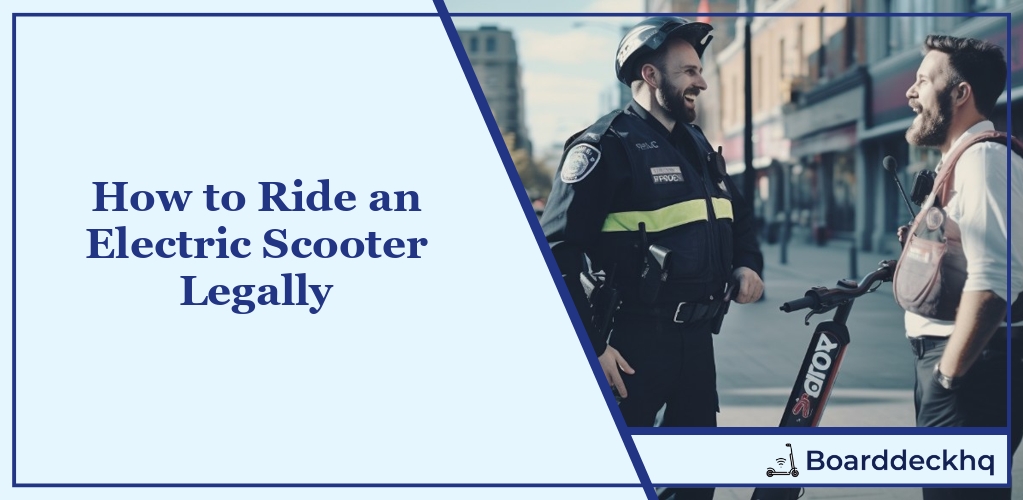In a world where eco-friendly commuting is gaining traction, electric scooters have emerged as a popular choice. They’re swift, convenient, and fun to ride, but do you know the legalities surrounding their use? Understanding the laws and regulations associated with electric scooters is crucial to ensure your smooth ride doesn’t hit any legal bumps. This guide is here to help you navigate the intricate landscape of electric scooter laws, regulations, and best practices to keep you safely on the move.
What we’ll cover:
- Electric Scooter Essentials
- A Look at Scooter Laws
- State-wise Regulations
- Importance of Safety Gear
- Riding in Public Spaces
- Speed Limit Insights
Ready to embrace the electric scooter revolution responsibly? Let’s hit the road and understand how to ride an electric scooter legally, and why following these laws is as important as wearing your helmet!
Understanding the Basics: What You Need to Know about Electric Scooters
Electric scooters have grown in popularity in recent years due to their convenience, cost-effectiveness, and fun factor. But before you hop on and ride an electric scooter, there are a few important things you need to know. It’s not as simple as just pushing a button and zipping away. Riding an electric scooter requires balance, coordination, and a solid understanding of the rules and regulations in your area.
Learning to ride an electric scooter starts with getting comfortable with the controls. Most electric scooters have a throttle on the right handlebar to control speed and a brake on the left. Some models also have a second brake at the rear that you can operate with your foot. The E-Scooter will also have a stand that you’ll need to kick up before you start moving.
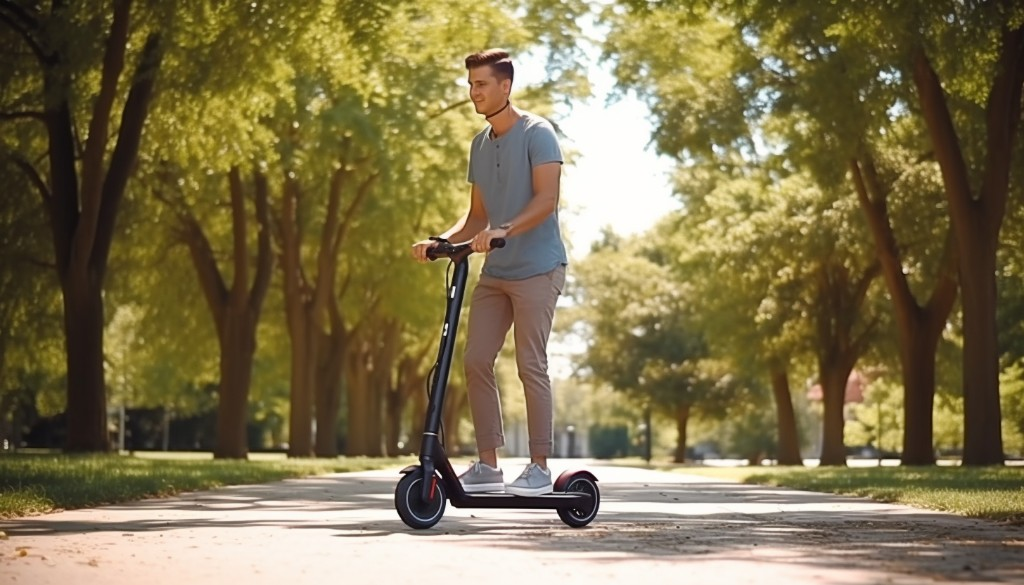
Once you’re familiar with the controls, it’s time to start riding. Stand on the E-Scooter with one foot and push off with the other. Once you’re moving, place your other foot on the scooter and gently twist the throttle to accelerate. To stop, simply squeeze the brake handle.
However, before you hit the open road, it’s crucial to understand where electric scooters are legal. Electric scooters are subject to different laws and regulations depending on the city or state. Some areas allow electric scooters on sidewalks, while others restrict them to bike lanes or roads. Ignorance of these rules can lead to fines or even confiscation of your scooter, so it’s essential to do your research before you ride.
Electric Scooter Laws: A General Overview
Now that we’ve covered the basics of how to ride an electric scooter let’s delve into the legal side of things. Just like driving a car, riding an electric scooter comes with its own set of laws and regulations that you need to adhere to. These electric scooter laws and regulations are designed to keep you and those around you safe.
One of the most important laws to be aware of is the speed limit. In many places, electric scooters are not allowed to exceed speeds of 15 to 20 miles per hour. Exceeding this limit can lead to fines or other penalties.
Next, let’s talk about helmets. Many places require scooter riders to wear a helmet, especially if they’re under a certain age. Even if it’s not required by law in your area, wearing a helmet is always a good idea for safety.
Finally, it’s crucial to know where electric scooters are allowed. As mentioned earlier, this can vary widely from place to place. Some cities allow scooters on sidewalks, while others restrict them to bike lanes or roads. Always make sure you’re riding in the designated areas to avoid penalties and keep everyone safe.

Local Scooter Laws and Regulations: How to Ride an Electric Scooter Legally
When it comes to local scooter laws in the United States, there’s a lot of variation from state to state. For instance, in California, electric scooters are legal on roads with a speed limit of 25 mph or less, and riders must wear a helmet if they’re under 18. Meanwhile, in New York City, electric scooters are allowed on all streets and bike lanes, but not on sidewalks.
These are just a couple of examples of how local scooter laws can vary. It’s essential for every rider to familiarize themselves with the regulations in their specific location. And while we’ve given a general overview here, we’ll be delving into each state’s rules in more detail in the upcoming section. By understanding and adhering to these laws, you can ensure a safe and legal electric scooter experience.
Local Scooter Laws and Regulations: Detailed State Breakdown
As we’ve previously mentioned, scooter laws vary across the United States. While the general consensus is that electric scooters should be operated safely and responsibly, each state has its unique set of rules and regulations.
For instance, in California, riders must be at least 16 years old, possess a valid driver’s license or learner’s permit, and always wear a helmet while riding. Electric scooters are permitted on roads with a speed limit of 25 mph or less and are also allowed on bike paths, trails, and bikeways. However, sidewalk riding is strictly prohibited.
On the other hand, New York only recently legalized electric scooters. Riders must be 16 years or older, but unlike California, helmets are not required unless you’re under 18. Scooters can be ridden on streets and bike lanes but not sidewalks.
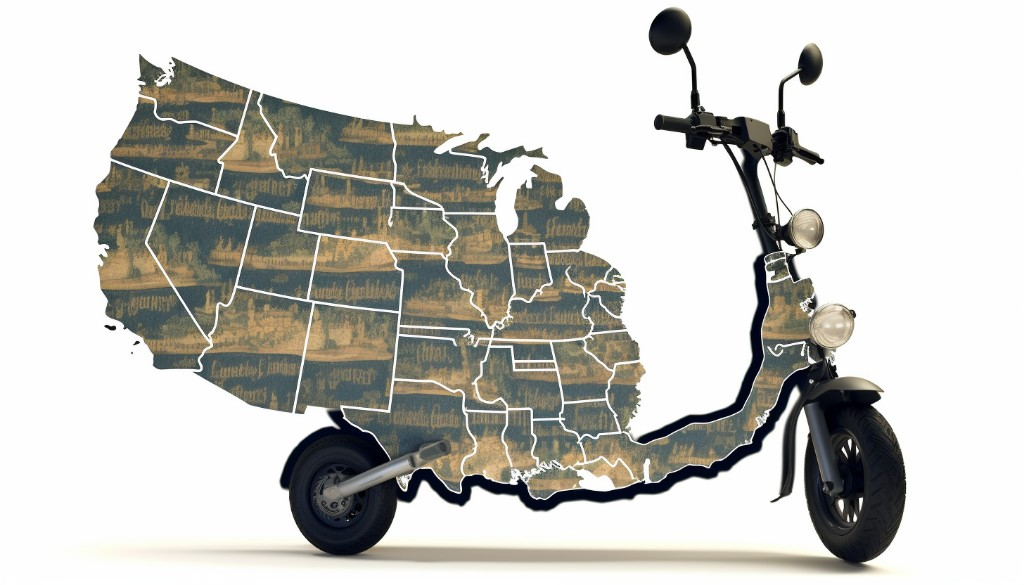
In Texas, there are no statewide age or helmet requirements for electric scooter users. However, some cities have implemented their own local ordinances. For example, Austin requires scooter users to yield to pedestrians at all times and prohibits them from riding on certain sidewalks downtown.
These are just a few examples of how scooter laws can differ significantly from state to state. Therefore, it’s crucial for riders to familiarize themselves with their local regulations before hitting the road.
Safety First: Essential Gear and Helmet Laws
Now that we’ve navigated through the legal landscape of electric scooters let’s switch gears and focus on safety. Riding an electric scooter may seem like a breeze, but like any other mode of transportation, it comes with its risks.
Safety gear plays a crucial role in minimizing these risks. A sturdy helmet is the most essential piece of safety gear. Regardless of your state’s helmet laws, it’s always a good idea to wear one. Think of it as your personal airbag – it may feel unnecessary until you need it.
In addition to helmets, consider investing in knee and elbow pads. They might take you back to your rollerblading days, but trust me, they can save you from painful scrapes and bruises. A high-visibility vest is also a good idea, especially if you plan to ride at night.
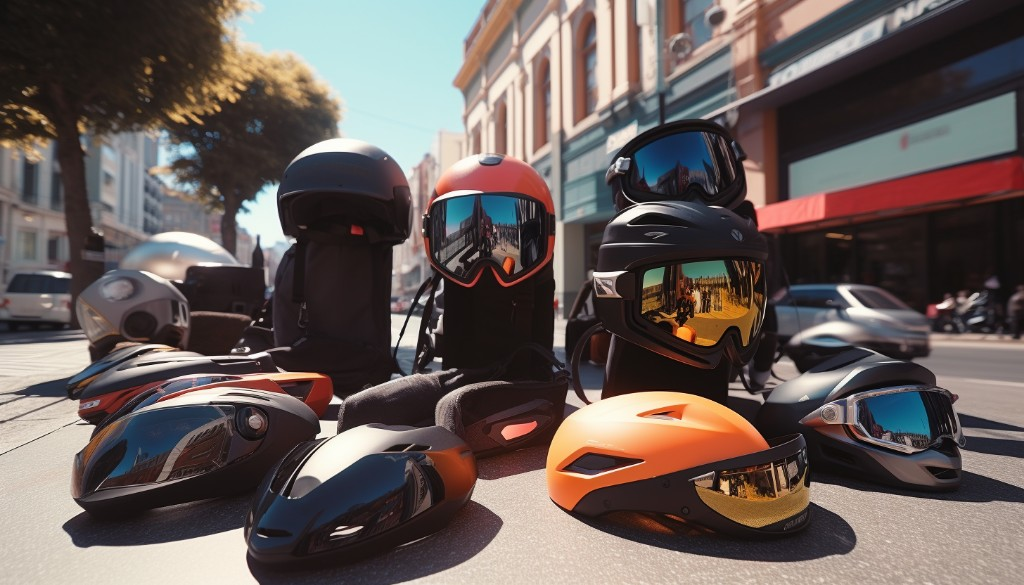
Navigating Public Spaces: Sidewalks, Streets, and Bike Paths
So, where can you ride your electric scooter? This question can be a bit tricky since the answer depends on local laws and regulations. Generally speaking, electric scooters are allowed on sidewalks, streets, and bike paths, but there are exceptions.
Sidewalks may seem like the safest place to ride an electric scooter, but in many cities, it’s illegal. This is because scooters can pose a threat to pedestrians. So, unless local laws specifically allow it, it’s best to avoid riding on sidewalks.
Streets are often a legal option for electric scooter riders. However, be aware of traffic and always follow the rules of the road. In some areas, electric scooters are only allowed on streets with certain speed limits, so be sure to check your local regulations.
Lastly, bike paths are usually a safe bet for electric scooter riders. They offer a smooth ride and are typically separated from vehicular traffic. Just remember to respect cyclists and always yield to them.
Remember, knowing where you can legally ride your electric scooter is just as important as knowing how to ride it safely. So make sure to research your local laws and always practice safe riding habits.

Speed Limit Guidelines and Restrictions for Electric Scooters
Riding an electric scooter can be a thrilling experience, but it’s not a free pass to zip around like a superhero in a comic book. Speed limit restrictions exist to ensure safety, and flouting them not only puts you at risk but also jeopardizes the safety of others around you.
Understanding Speed Limits for Electric Scooters
Most jurisdictions have specific speed limits for electric scooters. Typically, these are set at 15 to 20 miles per hour, although this varies depending on local laws and the type of area you’re riding in. For instance, in pedestrian zones, the maximum speed might be significantly lower. Think of it like this: electric scooters are to roads what joggers are to a park – they have their own pace, and it’s important not to disrupt the flow.
Before you hop on your scooter and whizz off into the sunset, familiarize yourself with these speed limits. A little bit of knowledge goes a long way in keeping you on the right side of the law.
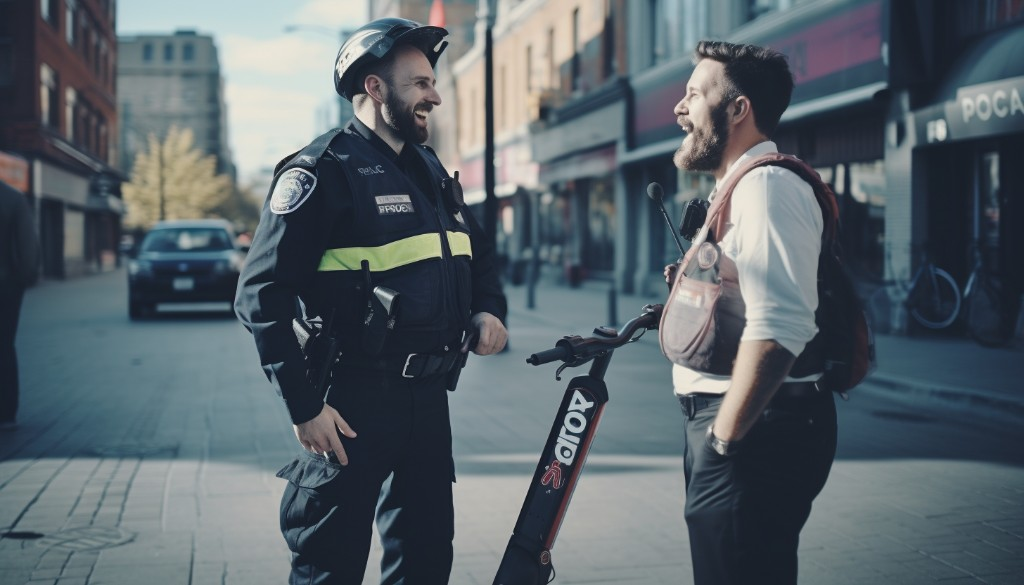
Why Adhering to Speed Limits is Crucial
Riding at excessive speeds isn’t just about breaking the law; it’s about the potential consequences that can ensue. An electric scooter might seem harmless enough, but when you’re traveling at high speeds, it can quickly become a dangerous vehicle. Remember that time you tried to run down a hill and couldn’t stop? That’s the kind of out-of-control situation we’re talking about.
Moreover, electric scooters are relatively small and silent, which means they can easily surprise pedestrians and other road users if they’re going too fast. This increases the chances of accidents occurring.
Tips for Maintaining Legal Speeds
To ensure you adhere to the speed limit when riding an electric scooter, here are some tips:
- Familiarize Yourself with Your Scooter: Different scooters have different top speeds. Knowing your scooter’s maximum speed can help you better control it.
- Use Speed Limiting Features: Many electric scooters come with built-in speed limiters that can help you maintain a legal speed.
- Stay Alert: Keep an eye on your speedometer and be mindful of your speed, especially in areas with lower speed limits.
- Practice Control: Practice controlling your speed in different situations – going uphill, downhill, on flat terrain, and so on.
Speed Limit Signage and What It Means
While riding an electric scooter, you’ll often come across various signs indicating the speed limit. These are typically white rectangular signs with black numbers, indicating the maximum speed in miles per hour. Paying heed to these signs is essential for legal and safe riding.
In some areas, you might find special signs for electric scooters, indicating a different speed limit than for regular traffic. This is similar to how a school zone works – there are special rules in place to ensure everyone’s safety.
When you see a sign indicating a lower speed limit than usual, this is usually because you’re entering a zone with increased pedestrian activity or other hazards. When you see such a sign, it’s time to ease off the throttle and slow down.
Remember, riding an electric scooter is not a race. It’s about getting from one place to another safely and legally. So next time you’re on your scooter, remember to stick to the speed limit. After all, as the old saying goes, “It’s better to arrive late than never arrive at all.”

By adhering to speed limit guidelines and restrictions for electric scooters, not only will you be abiding by the law, but you’ll also be ensuring a safer environment for yourself and those around you.
Closing Thoughts
The journey of comprehending how to ride an electric scooter legally begins with understanding the basics about these modern modes of transport. Through the lens of the law, we’ve explored a general overview and drilled down to local regulations, discovering that laws vary significantly from state to state. The crux of safety, especially regarding essential gear and helmet laws, has been highlighted as a non-negotiable aspect in this process. As we traverse public spaces, whether they be sidewalks, streets, or bike paths, it’s vital to respect shared zones and abide by speed limit guidelines and restrictions for electric scooters. Riding an electric scooter is not just about the convenience it offers, but also about the responsibility it demands. It’s a thrilling blend of fun, freedom, and foresight, making our cities smarter and our commutes greener.
Frequently Asked Questions
Where can I legally ride an electric scooter?
The legality of where you can ride an electric scooter varies depending on local laws and regulations. Generally, you are allowed to ride on streets and bike paths. However, some areas may restrict the use of electric scooters on sidewalks for pedestrian safety. Always check with your local authorities for specific guidelines.
What is the speed limit for electric scooters?
Speed limits for electric scooters can differ based on local laws. Typically, the speed limit ranges from 15 to 20 mph. However, certain areas may impose lower speed limits, particularly in high-traffic or pedestrian-heavy areas. Always ensure you’re aware of the specific speed restrictions in your area.
Is it mandatory to wear a helmet while riding an electric scooter?
Wearing a helmet while riding an electric scooter is highly recommended for safety reasons. In many states and localities, it is mandatory, particularly for riders under a certain age. However, laws can vary, so it’s essential to check the specific requirements in your area.
Are electric scooters legal in all states?
Electric scooters are not legal in all states. While many states have embraced them, others have specific restrictions or outright bans. It’s crucial to research the local laws and regulations in your state before purchasing or riding an electric scooter.
Can I ride an electric scooter on sidewalks and bike paths?
Whether you can ride an electric scooter on sidewalks and bike paths depends on local laws. Some places allow it, while others prohibit it for safety reasons. Always be mindful of pedestrians and other users of shared spaces, and check your local regulations to ensure you’re riding legally and responsibly.
